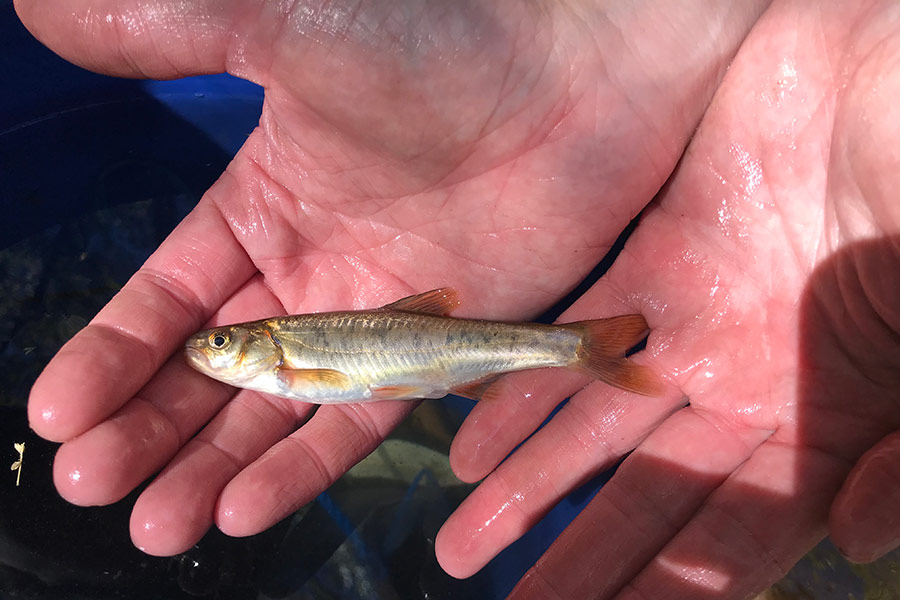≡
Virgin spinedace
A native minnow species recovered to 90% of its historically occupied habitat
The Virgin spinedace is a unique minnow species found only in the upper mainstem Virgin River and its clear, cool tributaries in southwestern Utah and neighboring Arizona and Nevada. The Virgin spinedace is listed in the Utah Wildlife Action Plan as a species of greatest conservation need, which ensures that it receives conservation funding from a variety of sources, including the Species Protection Account.
By 1994, threats to the Virgin spinedace had reduced populations to approximately 60% of their historic distribution, and the minnow was proposed for listing as a threatened species under the Endangered Species Act.
In response to the proposed federal listing, the Virgin Spinedace Conservation Agreement and Strategy was developed in 1995. This agreement did the following:
- Created a cooperative partnership between local, state and federal entities.
- Outlined conservation actions to reverse the decline and to protect and expand existing Virgin spinedace populations.
- Identified additional actions to re-introduce the fish into areas where they had been lost.
The primary goal of the conservation agreement was to increase the range of Virgin spinedace from 60% to at least 80% (approximately 115 miles of stream) of its historically occupied habitat. The U.S. Fish and Wildlife Service determined that full implementation of conservation actions in the agreement would eliminate the need for an ESA listing, and the proposed federal listing of Virgin spinedace was withdrawn in 1996.
The Virgin Spinedace (Lepidomeda mollispinis)
Despite extensive ongoing conservation efforts, the Virgin spinedace was again petitioned to be listed under the Endangered Species Act in 2012. The Utah Division of Wildlife Resources and other conservation agreement partners worked together with the USFWS to complete a species status assessment for Virgin spinedace. In September 2021, after examining the species status assessment and the latest biological data, the USFWS determined that listing the Virgin spinedace as threatened or endangered under the Endangered Species Act was not warranted.
The Virgin Spinedace Conservation Agreement and Strategy has been an extremely effective, flexible and powerful management tool for the conservation and recovery of Virgin spinedace. Local, state and federal partners have worked together to reverse the decline in Virgin Spinedace abundance and distribution throughout the Virgin River Basin. The partners have successfully enhanced existing Virgin spinedace populations and re-established populations where they had been lost. Virgin spinedace now occupy more than 90% of their historically occupied habitat. This expansion has occurred despite periods of extreme drought, wildfires and flooding that have happened since the conservation agreement took effect.
As of 2021, Virgin spinedace populations occur in 138.1 miles of stream across the Virgin River Basin. Virgin spinedace will require ongoing management, and the conservation agreement has proven effective in addressing threats and maintaining healthy populations throughout the range of the species. This effort has successfully achieved the goal of the Utah Wildlife Action Plan to prevent additional ESA listings through collaborative, creative and solution-based partnerships.









